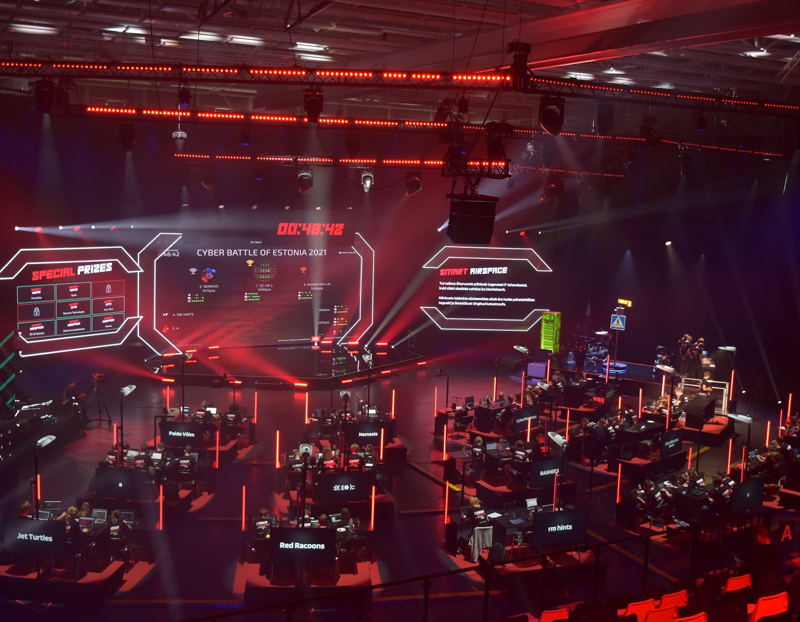 Nora Müller heads the International Affairs Department of the Körber-Stiftung.
Nora Müller heads the International Affairs Department of the Körber-Stiftung.
 Almut Möller is Director for European and Global Affairs at the European Policy Centre (EPC) in Brussels. The original version of this essay was written in German and is scheduled to be published in Internationale Politik.
Almut Möller is Director for European and Global Affairs at the European Policy Centre (EPC) in Brussels. The original version of this essay was written in German and is scheduled to be published in Internationale Politik.
Almost two years have passed since German Defense Minister Boris Pistorius made a public call—employing unusually drastic rhetoric for a German politician—that Germany must become “capable of war.” For this purpose, both the Bundeswehr (Germany’s Federal Armed Forces) and society must be prepared, said the commander-in-chief in peacetime. Since then, Europe’s security situation has further deteriorated. Following the turning point marked by Russia’s war of aggression against Ukraine, another epochal shift has occurred: Donald Trump’s election to a second presidency, with all that it implies for European security. Even though U.S. President Donald Trump reaffirmed the Article 5 commitment at the June 2025 NATO summit in The Hague, the reliability of the United States remains in question. Should an increasingly militarized Russia decide to test the Alliance in the foreseeable future—for example, with a limited attack on NATO territory—Europeans, given the growing doubts about the U.S. commitment to NATO, could in the worst-case scenario be left to defend themselves without the United States.

Estonian Defence League’s Cyber Unit and its cyber battle exercises serve as Baltic pillars in non-governmental resilience-building efforts | Source: Estonian Defence League’s Cyber Unit
Much is being debated about the state of the Bundeswehr, while significant investments are being made in its defense capability—the keyword being “whatever it takes,” as articulated by then incoming Chancellor Friedrich Merz in March 2025. This development was much needed, and it is on the right path. However, the second dimension mentioned by Pistorius has so far been largely overlooked in Germany: the strengthening of societal resilience in an increasingly precarious and evolving security situation. This includes a rise in hybrid attacks bearing Russian fingerprints—somewhere in the gray area between peace and high-intensity warfare, i.e., openly conducted military actions. Despite targeted sabotage against critical infrastructure and extensive disinformation campaigns, where there is no awareness of danger, it is difficult to build resilience. This challenge becomes even more evident when centrist parties largely circumvent the issue due to its political sensitivity and potential explosiveness.
The Baltic States demonstrate that there can be a different, proactive approach to societal resilience. Due to their geographical location, historical experiences, and constant confrontation with hybrid operations, the perception of threats among their populations is significantly more pronounced than in Germany. Defense and resilience are understood as a societal project rather than an undesirable task best delegated to “the state.” The concept of civil defense enjoys high acceptance. “Societal resilience in the Baltic States stems from a profound understanding that freedom is not given but must be actively protected—a lesson shaped by Soviet occupation and a clear-eyed view of Russia’s aggressive posture long before the 2022 full-scale invasion of Ukraine. This historical awareness has fostered a vigilant society that values democratic institutions and prioritizes security as a foundation of sovereignty,” explained Linas Kojala, Director of the Geopolitics and Security Studies Center, in the context of the Bergedorf Roundtable hosted by Körber-Stiftung in Vilnius in April 2025.
Lithuania has developed its own approach to resilience: strategic communication, targeted counter-disinformation, and cybersecurity are top priorities for state action, which go hand in hand with (organized) civil society. Social cohesion and robust democratic structures are considered important security factors that strengthen societies facing external threats from within. The Riflemen’s Union, for instance—a militia with a hundred-year history—operates as a volunteer organization at the intersection of civil society and state defense. Subordinate to the Ministry of Defense, it has significantly increased its membership in recent times.
Given varying geography, size, and very different historical frameworks, it is not so easy to transfer concepts of societal resilience in a “one size fits all” approach to other countries and societies.
The existing security situation in Europe has largely displayed a lack of societal preparedness. However, Germany can and must learn from the Baltic States on how to deal with the societal dimension of resilience. At its core, this concerns the task of developing a common understanding within German society of what is at stake: the loss of freedom, democracy, and quality of life in peace and self-determination. All of this may sound overwhelming to many Germans, but it captures the dimension of the task at hand. For many people, engaging with these issues feels like an imposition, as warning voices do not align with the realities of their living environment, their desires, and their personal, formative experiences from the past decades. A pandemic or a natural disaster is likely much more tangible for many people in Germany; this creates a bridge, as these events also require a high level of societal resilience.
Overall, for the time being, discussing the need to be prepared in Germany understandably provokes rejection among many citizens, considering its history since World War II. That is why it is important, in the German context, to clarify that preparedness is not about any form of “militarization” of society. Rather, it is about facing new realities of the present—together, as a country and as a society. One should not overlook that, in this way, new forces can be mobilized: forces that bring a dangerously fragmented society together, initiate innovations and change, and inspire renewed confidence in its future and in social cohesion.
Speaking of mobilizing new forces, it is again worth taking a look at the Baltics: following a wave of cyberattacks on Estonian institutions in 2007, the state’s cyber defense mechanisms have since been strengthened. At the same time, civil society structures evolved, supported by dedicated IT experts, students, and other volunteers who established civil cyber defense groups and platforms for digital self-defense. This example also shows that politics and state institutions—even when they cooperate at all levels—cannot strengthen resilience alone. Comprehensive resilience can only grow through the unleashing of common societal forces. It requires an understanding of resilience as a “first civic duty” and a partnership between the state and (organized) civil society. Here, the experience of Lithuania’s “Riflemen” is relevant, even if this form of “citizen militia” certainly cannot be transferred to Germany due to its history. Nonetheless, the questions that are relevant to Germany are: What drives people to care about the defense of their country? What motivates them, and what can we learn about how these attitudes form?
The resilience of democratic institutions, then, can be strengthened by laws on the one hand and by state actions on the other. However, protecting democracy needs many more networked initiatives for democracy and social education. It needs approaches beyond existing state organizations that inform people about potential threats in the physical and digital worlds, provide context, offer assistance, inform objectively about necessary precautions, and give behavioral recommendations, including in the event of an armed attack. The (dis)information space, in which non-governmental organizations (NGOs) and media play an important role, also deserves special attention. Once again, examples from the Baltic States can show the way, such as the initiative developed by the Meno Avilys NGO. The project “Big Small Screens” aims to strengthen the media literacy of Lithuanian teachers and students. Or ManaBalss.lv (“My Voice”), a platform founded by engaged Latvians through which citizens can initiate petitions and bring them to Parliament. Initiatives like ManaBalss.lv aim to strengthen trust in democratic processes, encourage political self-responsibility, and ultimately make the political culture more resilient.
Clearly, resilience cannot be prescribed or established overnight. Rather, it is a slow-paced process. In Germany, the past years have seen some progress on this front, but much more needs to be achieved to strengthen societal resilience. At the European level, former Finnish President Sauli Niinistö presented a report in 2024 with proposals to strengthen resilience and preparedness, thereby initiating a debate about what contributions the EU can make in this process. This is not about a unified Europe-wide approach, but rather about a clever interlinking of European states at national, regional, and local levels.
It is worthwhile for Germany to take a look at its neighborhood and seek exchange with societies that already have significantly more experience with methods and instruments for strengthening societal resilience. While not every measure may work in the German context, it is well worth exchanging experiences. Post-World War II (and later, post-reunification), Germany has been able to develop in a friendly regional and international environment within a strong EU. In the future, a robust development of Germany and its European partners will have to take place under significantly more difficult conditions—both regional and global. At this point, Germany should not repeat the mistake of ignoring the voices of its European partners, who warned of the impending threat well before the Russian wars of aggression against Ukraine. Luckily, Germany can still rely on the solidarity of its partners in the Baltic, but also, for example, in the Nordic countries, which already have an impressive track record in societal resilience.
The most effective approach would be for any such exchange of experiences and transfer of knowledge to take place at local levels. Resilience must be anchored where people live in order to be effective in emergencies—that is, in cities and municipalities. Here, state and societal forces should work hand in hand: for instance, what about a Baltic-Nordic-German exchange of mayors, along with relevant professionals from civilian and disaster protection, private aid organizations, educational institutions, and local associations?
“Being prepared” is a question of inner attitude and mindset. In Germany, addressing a potential direct military threat and the measures to strengthen resilience may trigger fears—for now. That is why many politicians are shying away from addressing them. In the Baltic countries (and also Nordic ones like Finland and Sweden), it is exactly the opposite: those who are prepared need not fear.
That is the direction Germany needs to go. If it fails to do so, the costs of a lack of preparedness could be high. At the moment, we are perceived as weak in the eyes of the aggressor, in part because our society is not vigilant enough—something that might encourage Russia to further attack. And in a possible case of military aggression, practiced and prepared human behavior could not only save lives, but also serve as the backbone of our country’s ability to withstand stress-tests with strength and resilience.







